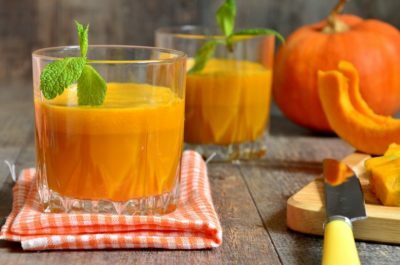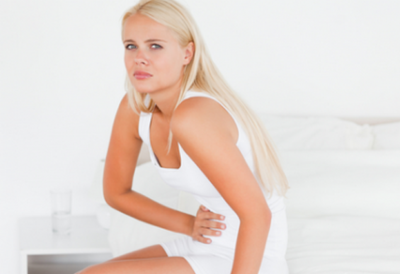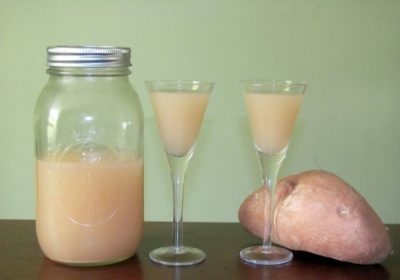Pancreatitis in children often occurs. According to statistics in different countries from 5 to 25% of the child population is inflammation of the pancreas. This is the result of excessive activity of the body during the child's growth, which leads to an excess of enzymes. However, the cause of the disease may be a disease of the internal organs or the external factors.

Causes of child pancreatitis
Called pancreatitis inflammatory or degenerative changes in the pancreas, which has a negative impact not only on the digestive system, but also the entire body. In addition to enzymes for digestion, gland produces the insulin necessary for glucose uptake. Therefore body work violation leads to diseases such as diabetes.
Cause of child pancreatitis can be any disease. At a younger age the pancreas reacts to any inflammation, infection or allergy.
Unbalanced diet - the most common cause of pancreatitis in high school for 9 years.
In an earlier age, to 5 years, the inflammation can be caused by a breach in the work of the body itself, when
pancreatic enzymes attack and break it the same cloth. A child under one year the disease develops as a result of congenital abnormalities, or allergic reaction.Common factors that contribute to children's pancreatitis:
- pathology of the internal organs;
- other gastrointestinal disease (enteritis, gastritis) bodies;
- excess of vitamin D;
- cholelithiasis;
- infestation with worms;
- abdominal trauma;
- lactase deficiency (uncommon in children younger than 2 years);
- food allergies;
- autoimmune processes;
- bacterial and viral infections (mumps, dysentery, flu, chickenpox);
- frequent reception of medicines;
- poisoning by heavy metals;
- alcohol;
- obesity;
- endocrine system diseases.
Trigger the development of the disease can and improper diet. The main factors are:
- eating junk food;
- overeating;
- eating at least 3 times a day.
It should be noted that in 30% of cases of child pancreatitis establish its cause is not possible. It is known that the disease can be hereditary.
symptomatology
Symptoms and Treatment of Child pancreatitis depend on the form of the disease. All three forms:
- acute;
- chronic;
- reactive.
Acute pancreatitis is usually diagnosed in children aged 10-12 years. But this form of disease can occur in a child first year of life. Acute pancreatitis in a child is the result of an allergic reaction to foods or medications. The younger the child, the less pronounced clinical signs of pancreatitis.
Acute pancreatitis in children is manifested by symptoms such as:
- nausea and vomiting;
- diarrhea;
- stomach ache;
- formation of white patches on the tongue;
- flatulence.
In some cases, the acute course of disease in a child can raise body temperature to subfebrile indicators (below 37,5 ° C).
Chronic pancreatitis in children usually occurs at school age - from 6 to 17 years. The main cause of the disease - an unhealthy diet. Chronic pancreatitis children persists for life, since the pancreas is an irreversible replacement of normal tissue inactive. Symptoms of pancreatitis in children:
- nausea and vomiting;
- chronic constipation or diarrhea;
- loss of appetite;
- weight loss;
- abdominal pain and distension (exacerbation periods);
- drowsiness and fatigue;
- allergic rashes.
The most common form of the disease is reactive. It arises as a result of poisoning, infection or inflammation in the body. Often the cause of reactive pancreatitis becomes excessive consumption of drugs.
When reactive pancreatitis symptoms following children:
- pain syndrome;
- repeated vomiting;
- swelling;
- fever.
On clinical grounds, this form is similar to the symptoms of acute pancreatitis.
For children the disease has a considerable threat, as there is a risk of death. But only if the pathology is not treated, because of what develops purulent abscess, and necrosis.
Diagnosis and treatment
To confirm the diagnosis requires consultation of pediatrics, pediatric gastroenterologist and a comprehensive examination of the child. It includes studies such as:
- general and biochemical blood tests;
- coprogram;
- Analysis of urine;
- Ultrasonography of the abdomen.
When inflammation of the pancreas in the general analysis blood is evident increase in leukocytes. Biochemistry of blood is needed to determine the level of enzymes. Elevated levels of lipase, amylase and trypsin suggests pancreatitis development.
Amylase can be detected not only in blood but also in the urine. A coprogram feces reveals the remnants of undigested food. Ultrasound examination is necessary to evaluate the condition of the body - increasing the size of and changes in the structure.
Treatment of pancreatitis in children includes drug therapy and diet. The first is aimed at the removal and maintenance of the acute symptoms of the pancreas. To do this, use drugs such as:
- spazmalitiki and analgesics;
- antisecretory agents;
- antiemetic;
- pancreatic enzymes.
The latter disadvantage may occur when reactive pancreatitis. Therefore, the mainstay of treatment is the administration of drugs to their content, e.g., Creon.
If you want to treat pancreatitis, it is necessary that the child stick to a diet. In medicine, this is called a table №5 diet or 5P. In the case of pancreatitis in children, treatment will be lengthy. Strict diet need a minimum of 6 months.
In the first 2 days after the onset of acute symptoms is best to completely abandon food. The child can be given to non-carbonated alkaline water. It is important to comply with bed rest during this period. On the third day of the injected liquid food. This can be a liquid vegetable puree, frayed porridge on water and stewed fruit. After stabilization of the patient nutrition necessary to select on the basis of the table №5.
Diet for pancreatitis in children includes products that do not stimulate pancreatic secretion. These include:
- chicken meat;
- lean fish;
- cheese casserole;
- cereals;
- pasta.
We must remember that fruits and vegetables can be eaten only boiled, stewed or baked form. Fresh vegetable food is strictly prohibited. Allowed 2-3 eggs a week, and a small amount of butter.
The diets should not be fried and fatty foods. Fall under the prohibition of pickles, soft drinks, beans, radishes, and ice cream.



